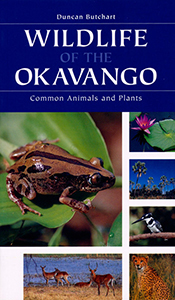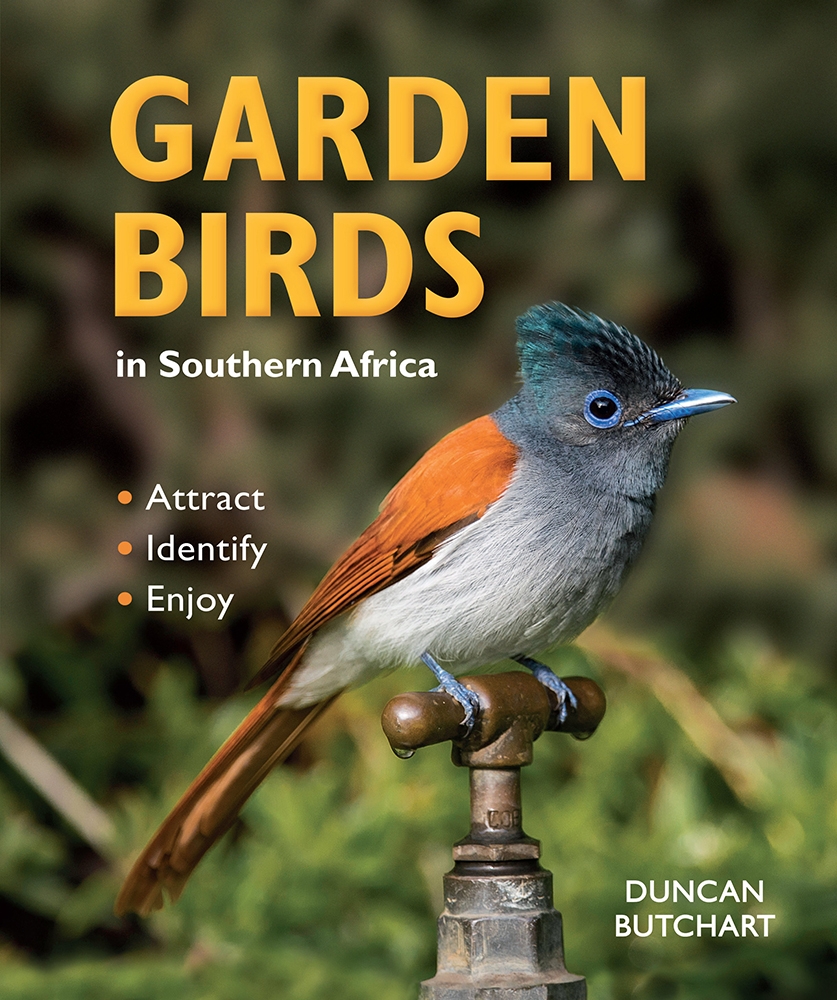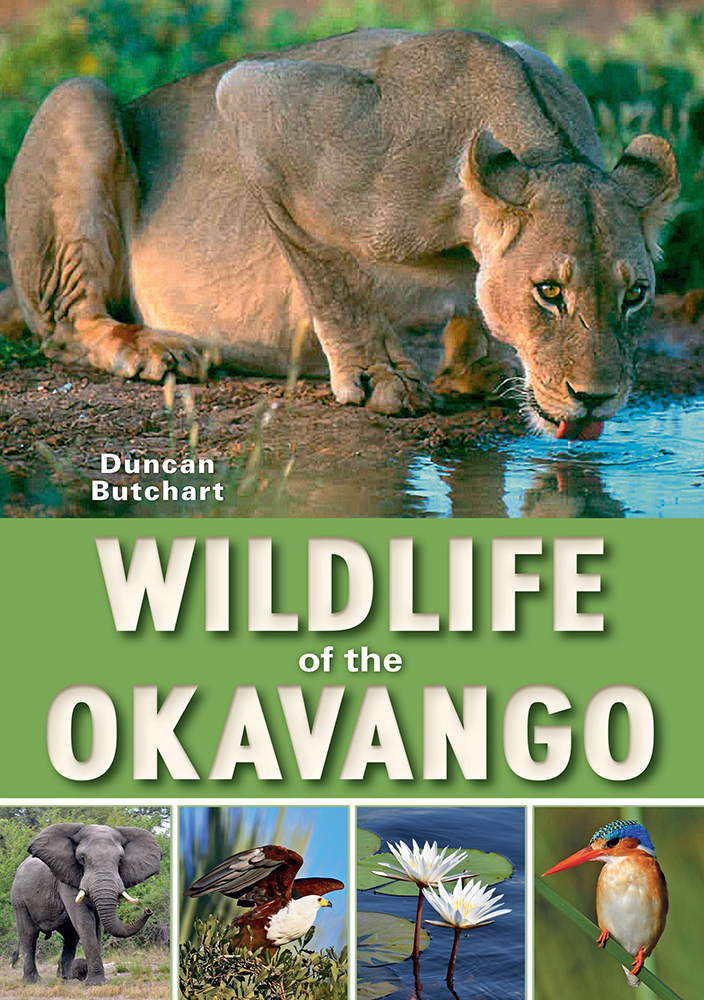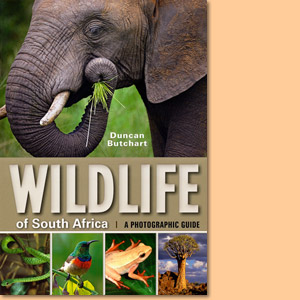Wildlife of the Okavango, by Duncan Butchart
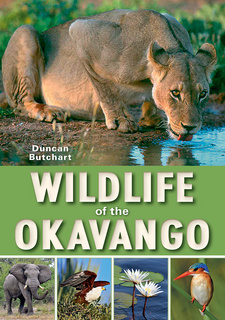
Wildlife of the Okavango, by Duncan Butchart. Penguin Random House South Africa (Nature). 3rd revised edition. Cape Town, South Africa 2016. ISBN 9781775843382 / ISBN 978-1-77584-338-2
Unlike most rivers, the Okavango, which has its source in the highlands of central Angola, never reaches the sea. Rarely can the word 'oasis' be used more appropriately than in a description of the Okavango Delta. In his wildlife guide, Wildlife of the Okavango, Duncan Butchart step by step introduces to the wonders of this region.
The deep sands of the Kalahari typically support a scrubby vegetation of thorn trees and tussock grasses, but add water, lots of it, and the landscape is completely transformed. The mosaic of channels, islands, lagoons and forests that are maintained by the annual flood support a wealth of wildlife, including large carnivores, great herds of elephant and spectacular birds. The lie of the land, or general topography, is a direct result of the geological history of the area as well as the ongoing processes of erosion and deposition. These processes, which are responsible for landscape formation, can be difficult for the non-specialist to grasp. However, two things are obvious when considering the Okavango Delta region. First, the area is so flat that termite mounds are the highest landforms (actually the land slopes gradually, l m every 4 km, to the southeast). Secondly, there are no rocks to be seen, other than the isolated koppies at Savute and Tsodilo. The entire area lies within the Kalahari Basin, a great depression filled with windblown sands, extending from the northeastern corner to South Africa to just south of the equator in the Democratic Republic of the Congo. Although the surface geology is simple, the rocks below the sands are seismically active and the area is prone to earthquakes. In years gone by the Okavango River was thought to have reached the sea, but authorities differ on how and where it may have flowed. Some believe that it joined the Limpopo River, while others speculate that it met the Orange River. It may, alternatively, have cut east and joined the Zambezi. Wherever it flowed in the past, the situation changed when tectonic movement gave rise to a series of parallel faults that caused a segment of the Earth's crust to collapse. Trapped within the confines of these faults, considered to be a southeastern extension of the Great Rift Valley, the course of the Okavango was interrupted, leading to the formation of an inland delta or, to be geographically correct, an alluvial fan. Northern Botswana lies in the subtropics, with temperatures and rainfall fluctuating markedly between the seasons. The average daytime temperature in midsummer (December-January) is about 32°C (max. 42°C), dropping to about 18°C at night. In midwinter (June-July) the daily average is 25°C, dropping to 4 or 5°C at night. Only occasionally do temperatures drop below freezing, and frost is rare. Rainfall at Maun, at the base of the Okavango Delta, averages 500 mm per year, but this figure increases progressively to the north. Almost all rain falls between November and April, usually in afternoon or evening thundershowers. Humidity may be high in summer, but is extremely low in winter In addition to these annual patterns, there are broader fluctuations with cyclical droughts and periods of above average rainfall. The Okavango Delta consists of three major components, which can be simplistically compared to the human hand: the wrist is the end of the panhandle, the palm the permanent swamp, and the fingers the channels - the arteries that feed the seasonal swamp. This environment fluctuates between wet and dry seasons, with the summer rains of the catchment reaching the base of the Delta in the rain-free winter months. The Okavango River enters Botswana at Mohembo, having travelled some 1,600km from its sources, and is channelled through a 15 km-wide 'corridor' between two secondary faults. [...]
This is an excerpt from Wildlife of the Okavango, by Duncan Butchart.
Title: Wildlife of the Okavango
Author: Duncan Butchart
Genre: Wildlife guide
Publisher: Penguin Random House South Africa (Nature)
3rd revised edition. Cape Town, South Africa 2016
ISBN 9781775843382 / ISBN 978-1-77584-338-2
Softcover, 15 x 21 cm, 144 pages, 500 colour photographs
Butchart, Duncan im Namibiana-Buchangebot
Wildlife of the Okavango
Describing 300 species, Wildlife of the Okavango is the only regional guidebook of its kind.
Wildlife of the Okavango
Wildlife of the Okavango is a compact introductory guide to the more common birds, mammals, fishes, plants and other forms of wildlife found in the Okavango region.
Wildlife of South Africa: A Photographic Guide
Wildlife of South Africa is handy, all-in-one photographic field guide to mammals, birds, reptiles, frogs and trees.

